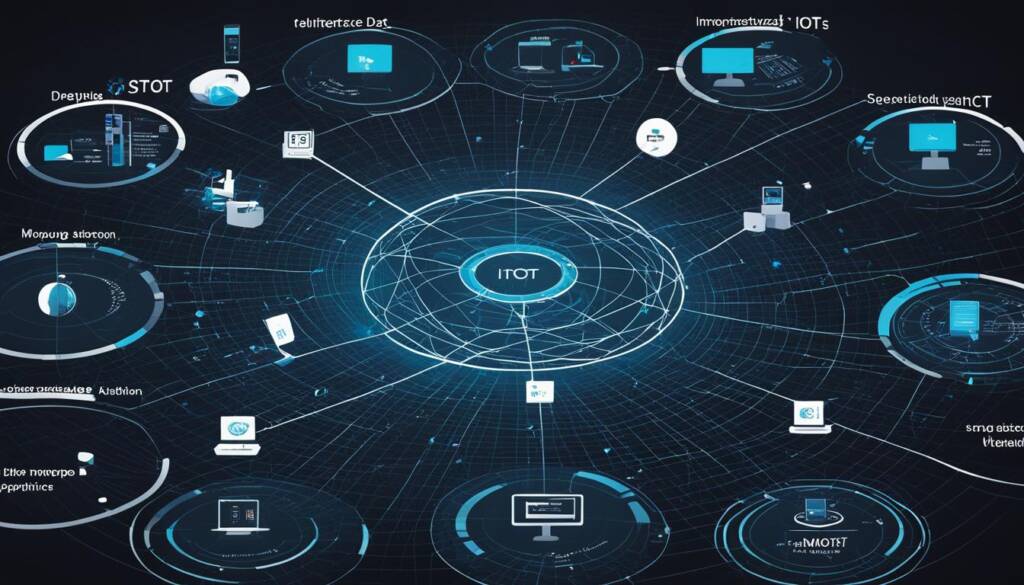Table of Contents
IoT device management plays a crucial role in the successful operation of connected devices in the Internet of Things (IoT) ecosystem. From IoT endpoints to edge devices, managing these interconnected devices requires processes, resources, and technologies that simplify setup, monitoring, and maintenance.
Effective IoT device management encompasses various aspects, including device setup, administration and monitoring of device fleets, managing the device lifecycle, and implementing IoT-specific security measures. It allows businesses to remotely monitor devices, troubleshoot issues, configure settings, and scale operations.
However, IoT device management also comes with challenges. From the availability of hardware to cultivating talent and managing costs, businesses need specialized solutions and expertise to tackle these obstacles. That’s where reliable IT delivery service providers like Stfalcon come in. They can help decrease costs and optimize IoT device management through efficient project planning, use of open-source solutions, scalability, flexibility, and cloud-based infrastructure.
What is IoT Device Management?
IoT device management refers to the comprehensive management of internet-connected devices, sensors, or machines within an IoT ecosystem. This encompasses various aspects such as device setup, administration, managing the device lifecycle, and ensuring the security of connected devices.
Connected device platforms, also known as IoT device management platforms, play a crucial role in streamlining management functions, making the overall process more efficient and effective. These platforms provide a centralized hub for device provisioning, authentication, remote configuration, data collection, and real-time monitoring, enabling seamless management of IoT devices.
The advantages of using IoT device management platforms are twofold. Firstly, these platforms offer automation capabilities that reduce manual intervention and simplify management tasks. The automation of routine processes enhances scalability and ensures operational efficiency, particularly when dealing with large-scale IoT deployments.
Secondly, IoT device management platforms prioritize security measures, including device-specific security measures, to safeguard connected devices and prevent potential security breaches. By incorporating dedicated security protocols and encryption methods, these platforms ensure the confidentiality and integrity of data transmitted between devices and the cloud.
Ultimately, IoT device management platforms provide businesses with a centralized solution to effectively manage their IoT device fleet, promote automation, and enforce strong security measures. By leveraging these platforms, organizations can optimize IoT device management, streamline operations, and stay ahead in the rapidly evolving IoT landscape.
Challenges in IoT Device Management
Managing IoT devices poses several challenges that organizations must overcome to ensure efficient device management and optimal performance. These challenges include:
- Scale and Complexity: With the exponential growth of IoT devices, managing large-scale deployments becomes increasingly complex. Organizations need comprehensive IoT device management solutions to handle the sheer volume of devices effectively.
- Network Performance: Reliable network connectivity is crucial for seamless device management. Ensuring efficient network performance and addressing potential bottlenecks are essential to maintain uninterrupted operations.
- Interoperability: IoT devices often operate across different network protocols, making interoperability a challenge. Compatibility issues can hinder device management processes, requiring organizations to implement solutions that facilitate smooth communication between devices.
- Firmware Updates: Keeping devices up-to-date with the latest firmware and software updates is vital for enhanced security and performance. However, managing firmware updates across a large fleet of devices can be time-consuming and challenging.
To address these challenges, efficient IoT device management solutions provide remote troubleshooting capabilities, over-the-air firmware update capabilities, and support for diverse communication standards. These features enable organizations to manage devices at scale, optimize network performance, and ensure seamless interoperability between devices.
Best Practices and IoT Device Management Solutions
Implementing best practices is crucial for efficient IoT device management. One of the key practices is device monitoring and control, which allows for real-time performance monitoring, troubleshooting, and remote configuration. By continuously monitoring IoT devices, businesses can identify potential issues and take proactive measures to ensure optimal performance and reliability.
Another important aspect of IoT device management is security. Establishing effective security measures such as authentication, encryption, and regular updates is essential to safeguard IoT devices and protect sensitive data. By implementing robust security protocols, businesses can mitigate the risk of unauthorized access, data breaches, and cyber-attacks.
Asset tracking and management are also vital in IoT device management. As businesses deploy a large number of devices across different locations, efficient asset tracking enables effective inventory management, improved maintenance scheduling, and streamlined deployment processes. By actively tracking and managing assets, businesses can optimize device utilization, reduce downtime, and minimize operational costs.
To streamline IoT operations, businesses can leverage IoT device management platforms. These platforms offer a range of features including easy onboarding, remote control and troubleshooting, metadata management, analytics, and enhanced security protocols. By choosing the right IoT device management platform, businesses can effectively manage their IoT ecosystem, improve operational efficiency, and ensure seamless integration with existing systems. Popular IoT device management platforms include AWS IoT Device Management, Google Cloud IoT, and Microsoft Azure IoT Device Management.
FAQ
What is IoT device management?
IoT device management refers to managing internet-connected devices, sensors, or machines in an IoT ecosystem. It involves device setup, administration, managing the device lifecycle, and ensuring the security of connected devices.
What are IoT device management platforms?
IoT device management platforms, also known as connected device platforms, streamline management functions like device provisioning, authentication, remote configuration, data collection, and real-time monitoring. These platforms automate management tasks, reduce manual intervention, and enhance scalability. They also incorporate dedicated IoT-specific security measures to safeguard devices and prevent security breaches.
What challenges are faced in IoT device management?
Challenges in IoT device management include scale and complexity of managing large numbers of devices, ensuring reliable network performance and interoperability, and keeping devices up-to-date with firmware and software updates. However, efficient IoT device management solutions provide remote troubleshooting, over-the-air update capabilities, and support for diverse communication standards.
What are the best practices for IoT device management?
Best practices for IoT device management include implementing device monitoring and control mechanisms for real-time performance monitoring, troubleshooting, and efficient remote configuration. Establishing effective security measures like authentication, encryption, and regular updates is crucial for safeguarding IoT devices and data. Asset tracking and management help efficiently manage a large number of devices deployed across different locations. IoT device management platforms streamline IoT operations by offering features like easy onboarding, remote control and troubleshooting, metadata management, analytics, and security.
Which IoT device management platforms are popular?
Popular IoT device management platforms include AWS IoT Device Management, Google Cloud IoT, and Microsoft Azure IoT Device Management.












